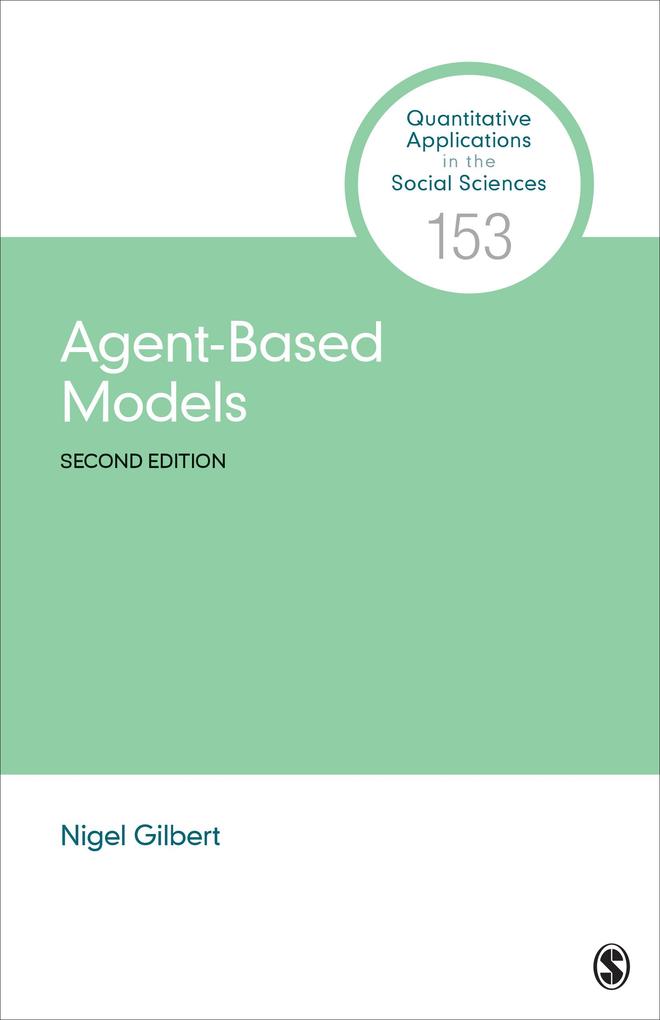
Zustellung: Mi, 16.07. - Di, 22.07.
Versand in 3-4 Wochen
VersandkostenfreiBestellen & in Filiale abholen:
The second edition of this popular book introduces agent-based modeling, an increasingly popular approach enabling researchers to build models where individual entities and their interactions are directly represented.
Inhaltsverzeichnis
Series Editor s Introduction
Preface
Acknowledgments
About the Author
Chapter 1: The Idea of Agent-Based Modeling
1.1 Agent-Based Modeling
1.2 Some Examples
1.3 The Features of Agent-Based Modeling
1.4 Other Related Modeling Approaches
Chapter 2: Agents, Environments, and Timescales
2.1 Agents
2.2 Environments
2.3 Randomness
2.4 Time
2.5 Population Learning
Chapter 3: Designing an Agent-Based Model
3.1 Design Steps
3.2 An Example of Developing an Agent-Based Model
Chapter 4: Developing an Agent-Based Model
4.1 Modeling Toolkits, Libraries, Languages, Frameworks, and Environments
4.2 Using NetLogo to Build Models
4.3 Building the Collectivities Model Step by Step
4.4 Verification: Getting Rid of the Bugs
4.5 Validation
4.6 Techniques for Validation
Chapter 5: Using Agent-Based Models
5.1 Planning an Agent-Based Modeling Project
5.2 Reporting Agent-Based Model Research
5.3 Agent-Based Models for Public Policy
Resources
Societies and Associations
Journals
Mailing List and Web Sites
Glossary
References
Index
Preface
Acknowledgments
About the Author
Chapter 1: The Idea of Agent-Based Modeling
1.1 Agent-Based Modeling
1.2 Some Examples
1.3 The Features of Agent-Based Modeling
1.4 Other Related Modeling Approaches
Chapter 2: Agents, Environments, and Timescales
2.1 Agents
2.2 Environments
2.3 Randomness
2.4 Time
2.5 Population Learning
Chapter 3: Designing an Agent-Based Model
3.1 Design Steps
3.2 An Example of Developing an Agent-Based Model
Chapter 4: Developing an Agent-Based Model
4.1 Modeling Toolkits, Libraries, Languages, Frameworks, and Environments
4.2 Using NetLogo to Build Models
4.3 Building the Collectivities Model Step by Step
4.4 Verification: Getting Rid of the Bugs
4.5 Validation
4.6 Techniques for Validation
Chapter 5: Using Agent-Based Models
5.1 Planning an Agent-Based Modeling Project
5.2 Reporting Agent-Based Model Research
5.3 Agent-Based Models for Public Policy
Resources
Societies and Associations
Journals
Mailing List and Web Sites
Glossary
References
Index
Mehr aus dieser Reihe
Produktdetails
Erscheinungsdatum
07. Mai 2020
Sprache
englisch
Auflage
2 Revised edition
Seitenanzahl
128
Reihe
Quantitative Applications in the Social Sciences
Autor/Autorin
Nigel Gilbert
Verlag/Hersteller
Produktart
kartoniert
Gewicht
148 g
Größe (L/B/H)
216/142/10 mm
ISBN
9781506355603
Entdecken Sie mehr
Bewertungen
0 Bewertungen
Es wurden noch keine Bewertungen abgegeben. Schreiben Sie die erste Bewertung zu "Agent-Based Models" und helfen Sie damit anderen bei der Kaufentscheidung.



















